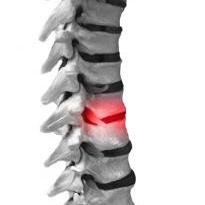Article reports that older patients with lower back pain are getting more complex, more expensive spinal fusion surgeries more often than ever before, resulting in high complication rates and increasing costs for US healthcare. In a Reuters story edited by Paul Simao, a content analysis of Medicare records between 2002 and 2007 has revealed a 15-fold increase in the rate of complex surgeries to treat spinal stenosis — a common condition in the elderly in which the spinal canal narrows, causing pain in the back and legs.
The article points out that charges for those surgeries rose by 40 percent in the same period, due to the introduction of new technology such as spinal cages and special screws used to fuse vertebrae together. Rates of complex fusion surgery increased from 1.3 per 100,000 patients to 19.9 per 100,000.
Marketing by orthopedic device makers drives much of the growth, the article speculates.
The most complex type of surgery increased at a rate a far more rapid that what is explicable on the basis of severe disease alone, the researchers reported.
This makes sense given the data do not support the efficacy of spinal fusion as a viable long term alternative for patient spinal health. The articles goes on to report that studies suggest complex spinal fusion surgeries offer little benefit over simpler procedures for most patients, and increase the risk of complications. The net result: the swell in spinal fusion drives up the cost of health care without much evidence that it is improving/providing effective care to elderly patients.
Last year the JAMA found that the cost of treating spine problems rose more than 60 percent in the past decade , reaching $85.9 billion a year – – a cost that actually rivals the economic burden of treating cancer which costs $89 billion.
The research also found that complex fusion operations are associated with a higher rate of serious complications. Patients in the study who had a complex fusion procedure had a nearly three times higher odds of a life-threatening complication.
Adding insult to injury (literally!), hospital charges during this period rose 40 percent in inflation-adjusted dollars, the research showed.
The researchers stated that the study should remind patients, doctors and insurance companies to carefully weigh the options for spinal surgery. Hospital Angeles Tijuana is particularly excited that resident spinal surgeon Dr. Juan Dipp’s wrote the global protocol for Lumbar Dynamic Stabilization, working with the American medical device manufacturer Interventional Spine Inc’s Percudyn System. In North America, the LDS procedure is available exclusively at Hospital Angeles Tijuana, part of the largest private network in Mexico.
Compared to spinal fusion, Lumbar Dynamic Stabilization is noninvasive, ambulatory, and with a much higher success rate/expectancy….and far, far less expensive. Lumbar Dynamic Stabilization is a win win for the US aging baby boom population, and resultant impacts on the health care system.






